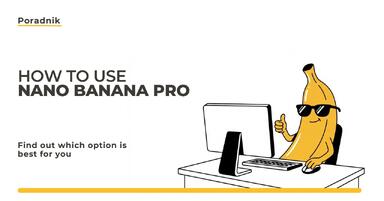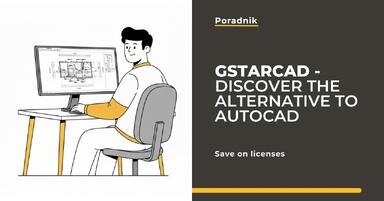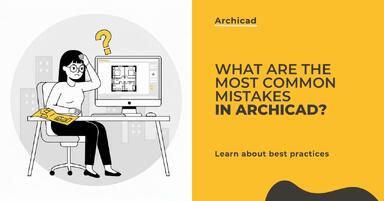Publication date: 17-02-2025 | Update date: 17-02-2025 | Author: Piotr Kurpiewski
How to Create Photorealistic Visualizations in AI?
See how artificial intelligence (AI) is changing the landscape of architecture, design, and graphics through Stable Diffusion software and the special ControlNET extension. The article presents tools that are changing the game in creating photorealistic visualizations, ensuring time savings and unlimited creativity. Practical AI applications are showcased, from simple models in SketchUp to advanced images. Find out for yourself whether artificial intelligence is already an alternative to traditional rendering engines.
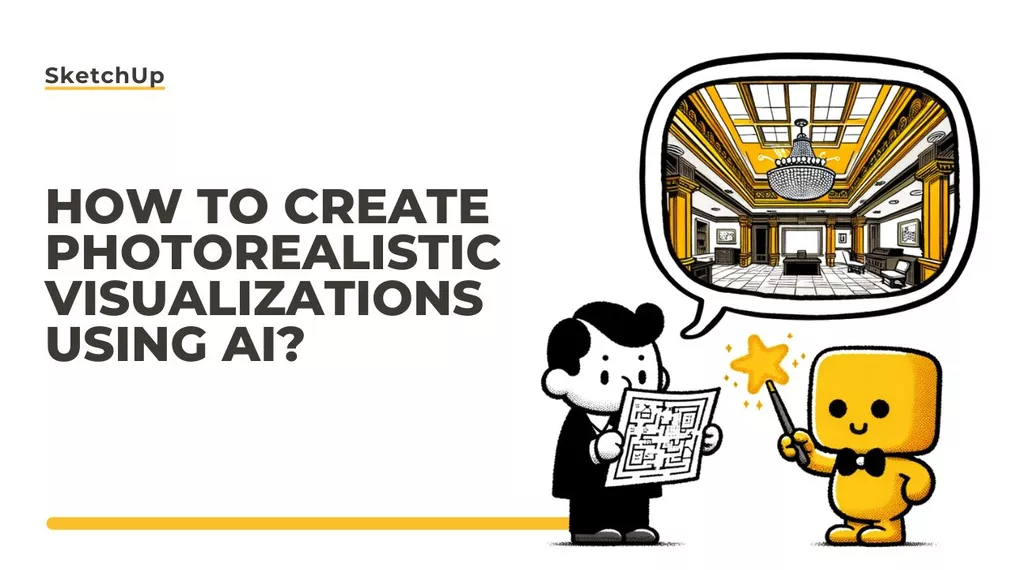
Artificial Intelligence: Future or Temporary Trend?
In recent years, we have witnessed revolutionary changes in the world of graphics and interior design, mainly due to the advancing integration of artificial intelligence (AI) with traditional tools used by professionals up to now. This process opens up new possibilities for designers, architects, and graphic artists. In this article, I delve into the topic of creating photorealistic visualizations using artificial intelligence algorithms and consider whether this technology can replace traditional, more expensive rendering programs.
What is Stable Diffusion?
Stable Diffusion is a breakthrough in the field of visualization (and beyond!). It is a generator and advanced image modifier based on so-called machine learning. It allows for the creation of high-quality graphics and renders at an incredible speed. It is completely free. It is beginning to pose a serious competition to programs such as: V-Ray or Cycles.
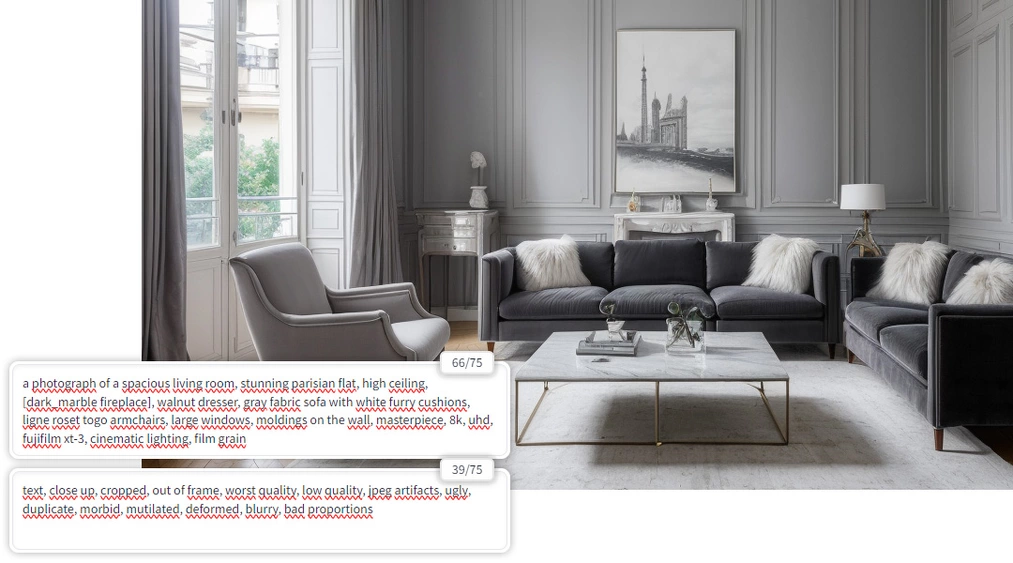
Using Stable Diffusion does not require specialized knowledge; it is controlled by text and works like a competent collaborator. Unlike complex rendering engines, the software encourages intuitive interface and provides ample room for experimenting with various image variations without worrying about additional costs or time-consuming processes. You can learn more about Stable Diffusion from our article titled “What is Stable Diffusion and what is it used for?”.
How to achieve better results in Stable Diffusion?
ControlNET is an extension for Stable Diffusion. It allows for greater control over the process of creating graphics. With it, you can precisely direct the generation of images, which is crucial in the context of interior design and architecture. It enables creators to better utilize the potential of AI by adapting images to specific needs. This is particularly important in an industry where details and precision are paramount.
Take a look at the example below, which uses ControlNET with the Depth layer. You can think of it as the direction that Stable Diffusion takes when generating the output image. In this case, it is information about depth. Based on it, you can precisely define what you expect from the software.
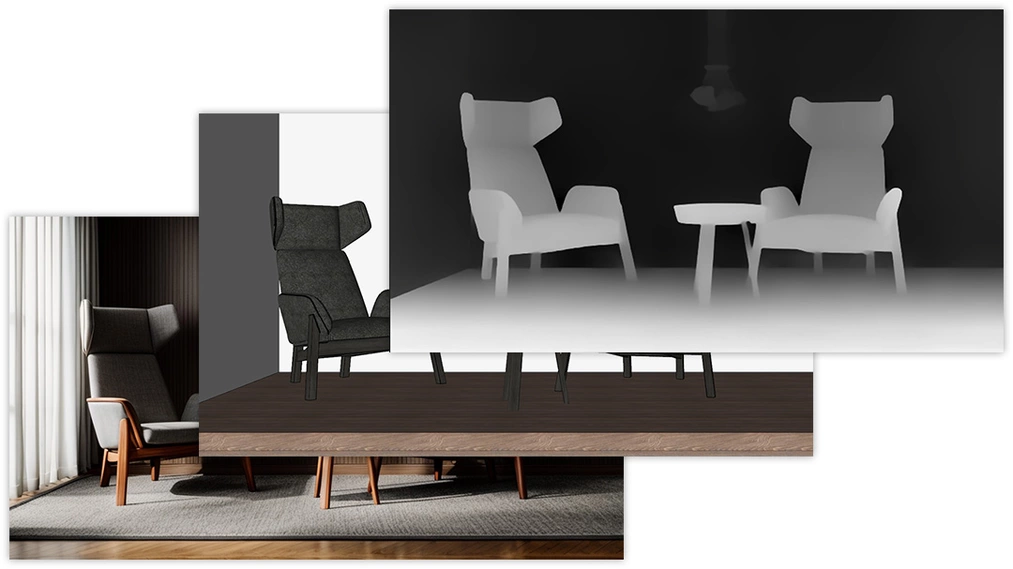
How to create a photorealistic visualization with AI?
Creating photorealistic visualizations using artificial intelligence starts with a simple model in SketchUp. The view from SketchUp can be exported as a raster image, and then, using ControlNET, processed in Stable Diffusion.
To achieve the desired effect, several layers can be applied. In addition to the aforementioned Depth, there are also: Lineart, NormalMap, or Canny. They allow for transforming the input image, influencing its contours, modeling, or overall appearance to varying degrees. Each stage of this process is important - from choosing the right controller, through modeling and generator settings, to the description in the prompt.
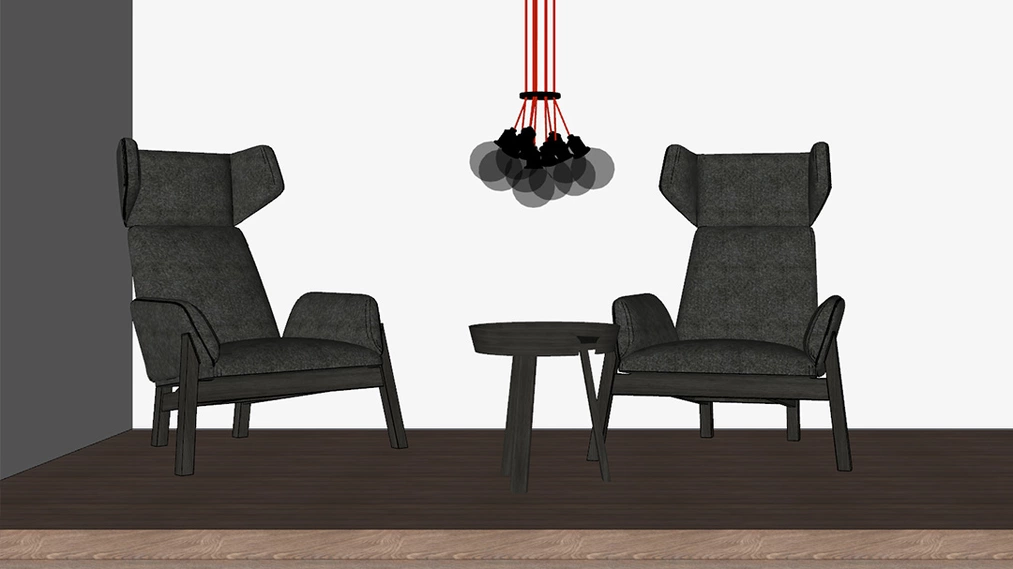
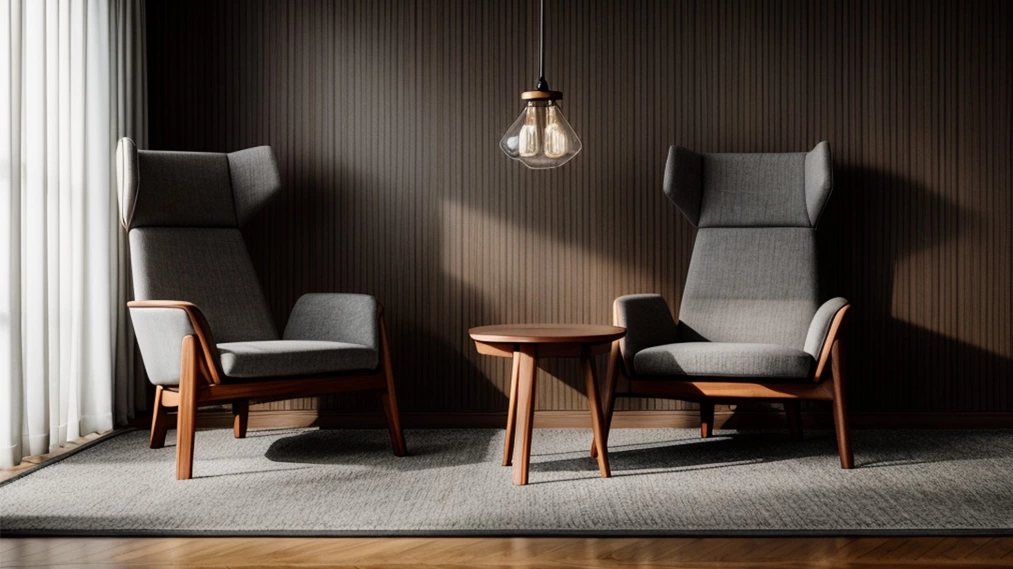
Will AI replace V-Ray?
In the face of the growing capabilities of AI, traditional rendering tools, such as V-Ray, may soon become less popular. Today, artificial intelligence creates photorealistic visualizations based on simple graphics. These don't even have to be views from SketchUp; you can just as well use the workspace area in 3ds Max or simply a pencil sketch. Stable Diffusion handles them exceptionally well!
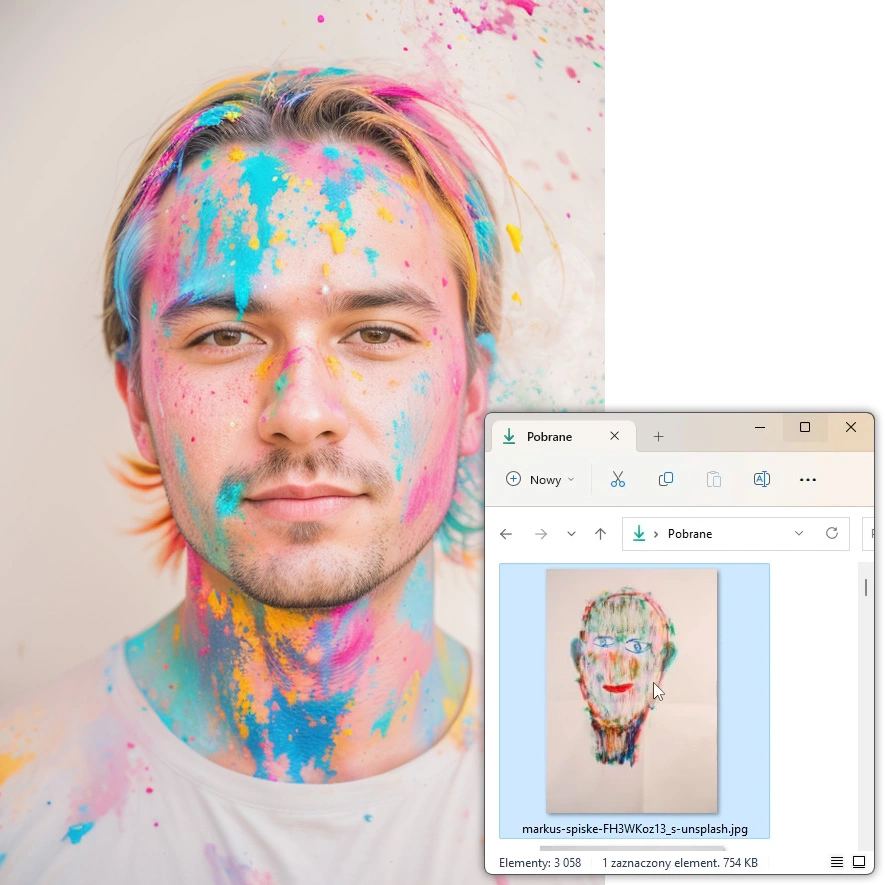
Utilizing AI in design offers new perspectives and even heralds a paradigm shift in the architectural design industry. Rendering engines won't disappear completely (at least not now!), but machine learning algorithms would currently be able to capture a really large part of the market.
Summary
Stable Diffusion along with extensions such as: ControlNET and Regional Prompter represent a significant advancement in the field of design and graphics. Their capabilities allow for a substantial increase in work efficiency, opening up new paths of creativity. As free tools, they provide an attractive alternative to expensive rendering programs.
The potential of AI in design is enormous. It is not limited to creating visualizations, but extends to other aspects such as automating inventories or creating functional layouts. I invite you to explore these possibilities in my latest AI Course - Artificial Intelligence in Interior Design, where I thoroughly discuss the process of creating photorealistic visualizations using artificial intelligence. This is not only an opportunity to learn new skills, but also to glimpse into the future of design!
Read on our blog
-
![How to use Nano Banana Pro and how much does it cost? A practical guide for beginners]()
How to use Nano Banana Pro and how much does it cost? A practical guide for beginners
Learn how to use Nano Banana Pro for free via Gemini, when it’s worth paying, and which solution will be best for you! -
![Artificial intelligence - AI - for furniture manufacturers - see what possibilities it offers!]()
Artificial intelligence - AI - for furniture manufacturers - see what possibilities it offers!
Discover the AI tools and workflows that enable creating packshots, material variants, and interior arrangements: in practice, step by step. -
![Alternative to AutoCAD - Discover GstarCAD with a Perpetual License]()
Alternative to AutoCAD - Discover GstarCAD with a Perpetual License
Looking for a cheaper alternative to AutoCAD? GstarCAD is a professional CAD tool that costs up to 5 times less. See what it offers! -
![What are the most common mistakes made in Archicad by beginners?]()
What are the most common mistakes made in Archicad by beginners?
Are you starting with Archicad? Find out which mistakes beginners most often make and how to avoid them to work more efficiently!
Want to learn Sketchup? Check out our free online course!

